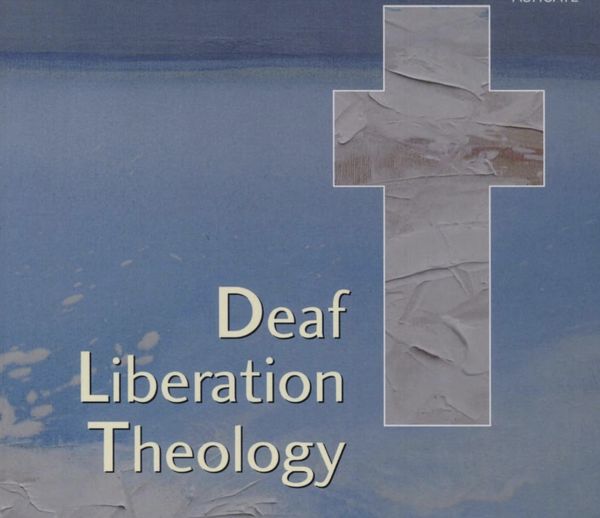
The Deaf Person's Creed
Reflect on the “Deaf Person’s Creed” in Deaf Liberation Theology. How would you explain to a hearing congregation that a person can be “Full Deaf and made in the image of God”?
We might use the concept of 'God's image' to begin. Reinders (2008) argues that — persons, no matter intellect, or sensory status, or physical difference — their “humanity (or is the right term personhood?) cannot be solely established in secular terms — as a member of a species, genus, kingdom, or domain. The relationship is begun by divine action and not human” (p. 243). This is the Good News that the gospels proclaim. Differences are “hardly relevant in view of the gift of grace embodied in the Eucharist” (p. 243).
To summarize the view:
- We are created in God’s image
- Grace is not of our own doing
- Being human by being in communion with God
In the Deaf Person's Creed, the glosses for the BSL go like this: “I believe God, Created everything heaven earth both, Including me” (Lewis, 2007, p. 178). To some uninitiated hearing people this might be a bold claim. We may be all familiar with our belief that we are all made in the image of God, but Christians have not always interpreted this to be “relevant to issues such as the education of d/Deaf children or the social position of d/Deaf people; nor has it always been apparent in the attitudes within and without the church towards such things as 'genetic counseling' and medical 'treatment' of d/Deaf people” (p. 106-107). We need to make this clear, since it may be orthodoxy but not always praxidoxy in the Church, through our explanations.
Each section of the signed, written gloss, and standard written English, in brief exegeses, will enrich the concept of how Deaf people are indeed, made in God’s image.
Reference
- Lewis, H. (2007). Deaf liberation Theology: Explorations in Practical, Pastoral and Empirical Theology (Kindle ed.). NY: Routledge.
- Lewis, H. (2020, October 9). “Deaf people sign the Creed.” Retrieved from https://www.facebook.com/679732245/videos/10158783105402246/
- Reinders, H. (2008). Receiving the Gift of Friendship: Profound Disability, Theological Anthropology, and Ethics. Grand Rapids, Michigan: Wm. B. Eerdmans Publishing Co.
NB: These remarks are in part the product of a course with the Rev. Dr. Thomas Hudspeth, Deaf clergy in the UMC, minister, pastor, missionary, and educator.
Biography from https://www.routledge.com/Deaf-Liberation-Theology/Lewis/p/book/9781032099699?fbclid=IwAR31k_0dlqfw3Zz01UY6zKS91X1O5A-IZKnYbJIIWEDnce1izUJhzDCRVvI. Hannah Lewis completed her first degree in Natural Sciences and Theology at Corpus Christi College, Cambridge in 1993 and her PhD at Birmingham University in 2003. She was ordained a priest in the Church of England in 1998 and currently works as Team Leader for work among Deaf people in Liverpool diocese. She has been Deaf since childhood, is fluent in BSL and has been involved in the Deaf Church in a variety of capacities since 1997. She serves as committee member responsible for lay training on the National Deaf Church Council and is a founder member of DECUK, Deaf Ecumenical Clergy UK, which provides CME for Deaf clergy in the UK.

